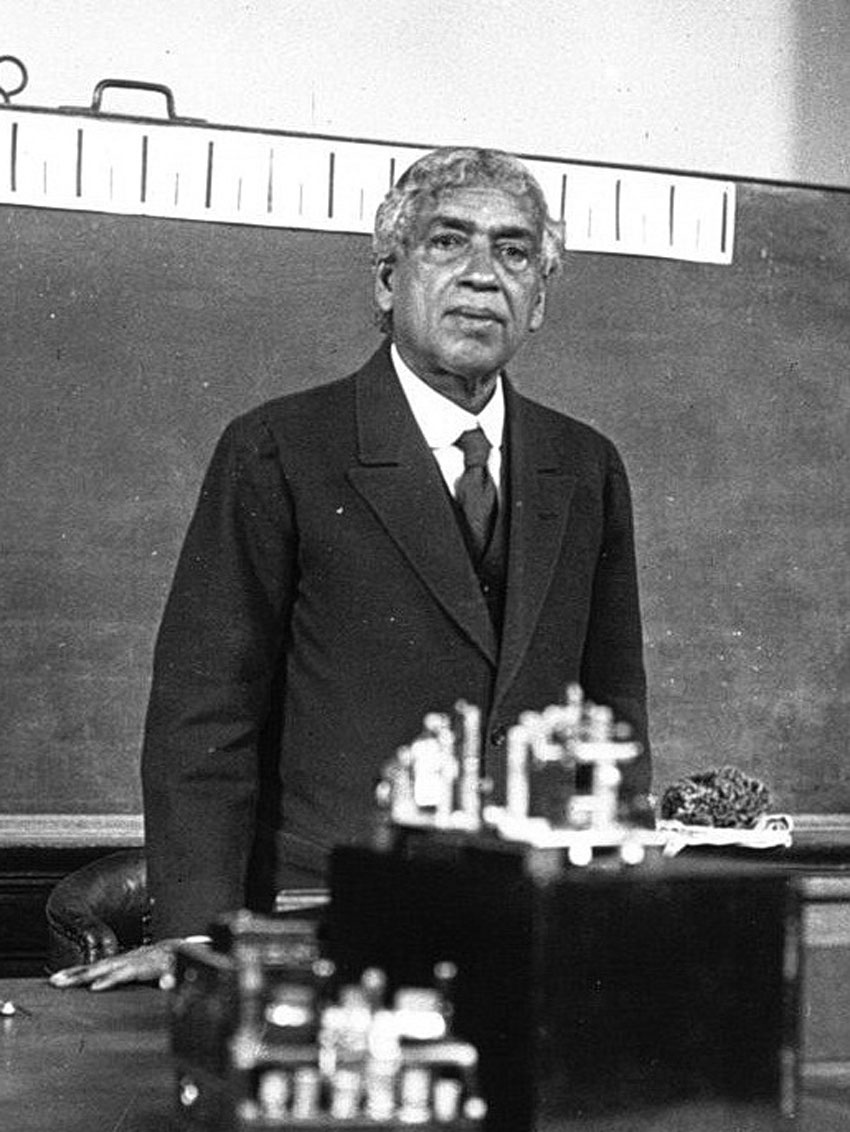Sir Jagadish Chandra Bose Among Nominees to Become Face of UK’s New £50 Note
File photo of renowned Indian scientist Sir Jagadish Chandra Bose (1858-1937) lecturing on the “nervous system” of plants at the Sorbonne in Paris in 1926. (Wikimedia Commons)
Indian physicist and physiologist Sir Jagadish Chandra Bose was revealed, Nov. 26, among hundreds of scientists nominated in the first stage of the Bank of England’s search for the face to feature on a new £5 note to go into print from 2020, writes Aditi Khanna.
Bose, who was born in Bengal during the British Raj in 1858, is credited with proving that animals and plants share much in common as a result of his very early experimentations and the creation of a very sophisticated instrument called the crescograph to detect minute responses of living organisms.
He is nominated alongside one of the world’s best-known physicists, Stephen Hawking, as the Bank of England announced that it had received a total of 174,112 nominations since it confirmed that the new note would feature a scientist who had made a significant contribution to British science.
This is only the preliminary stage of identifying eligible names for consideration. At this first stage, a nomination has been deemed eligible simply if the character is real, deceased and has contributed to the field of science in the UK in any way, the Bank of England said in a statement.
Bose attended the University of Cambridge, studying natural sciences after graduating with a physics degree from Calcutta University. He returned to India in 1884 after completing his BSc degree from Cambridge University and was appointed Professor of Physical Science at Presidency College in Kolkata.
In 1917, Bose left his professorship and established the Bose Institute at Kolkata, which was initially devoted principally to the study of plants.
Bose and black hole expert Hawking are up against the likes of former British prime minister Margaret Thatcher, who qualified as a nominee within the bank’s specified criteria because of her work as a chemist before her career in politics.
Among some of the other 600 men and 200 women in the early nominations list include computing pioneers Alan Turing and Ada Lovelace, telephone inventor Alexander Graham Bell and astronomer Patrick Moore.
Penicillin discoverer Alexander Fleming, father of modern epidemiology John Snow, naturalist and zookeeper Gerald Durrell, and fossil pioneer Mary Anning, and British-Jamaican nursing pioneer Mary Seacole are among the others.
The names, once finalized after the Dec. 14 deadline for the close of nominations, will be considered by the Bank of England’s Banknote Character Advisory Committee.
UK bookmakers William Hill have Hawking as the current favorite, with odds of 7/4, followed by Nobel Prize- winning chemist Dorothy Hodgkin at 4/1. Lovelace, Turing, Fleming and electromagnetic pioneer Michael Faraday have odds of 5/1 and Rosalind Franklin, who made important contributions to the understanding of DNA, is at 6/1.
The Bank of England had revealed a few months ago that nominations for the new note can include anyone who worked in any field of science including astronomy, biology, bio-technology, chemistry, engineering, mathematics, medical research, physics, technology or zoology.
Until the criteria was unveiled, a campaign had been building up in favor of British Indian World War II spy Noor Inayat Khan to feature on the new currency.
An online petition in favor of Khan attracted thousands of signatures, calling for the descendant of Tipu Sultan and daughter of Indian Sufi saint Hazrat Inayat Khan to be considered as the first ethnic minority British woman to be honored on the currency.
The £50 note will be the final redesigned note to go into circulation, after notes in the denomination of five and 10 have already been reissued in polymer. The new £20 polymer note will go into circulation from 2020, when the £50 is set to go into print to be circulated at a later date.


